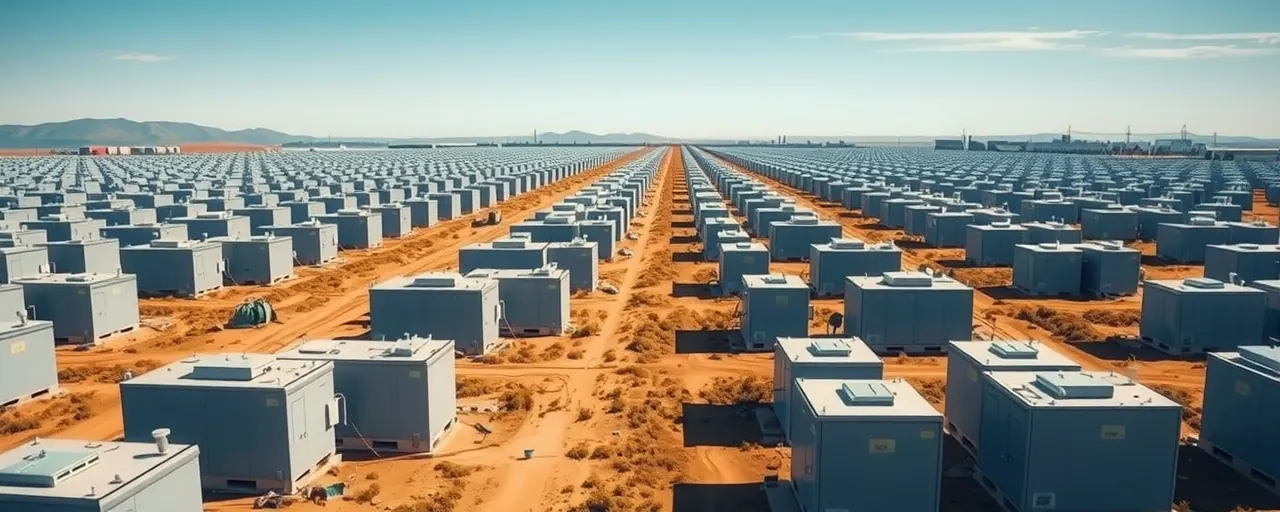The Battery Bandwagon Rolls On
California’s energy landscape just hit a milestone: 15,763 megawatts of battery storage capacity, a 1,944% leap since 2019. Governor Gavin Newsom hails it as proof of a bold vision for a cleaner, modern grid. The state added 2,300 megawatts in under a year, outpacing nearly every nation except China. Impressive? Absolutely. But here’s the question: is this rapid expansion a game-changer for reliability, or a risky bet that leaves taxpayers holding the bag?
Batteries promise a neat solution. They store solar and wind energy, then release it when demand spikes, keeping the grid steady. Newsom calls this the foundation of tomorrow’s power system. Yet, the reality is messier. Soaring costs, supply chain hurdles, and the sheer scale of the task raise doubts about whether this is the smartest path. Families and businesses need a grid they can count on, not one chasing lofty ideals at any price.
Why should you care? Those megawatts don’t come cheap. The costs land in your utility bills, your taxes, and the state’s budget. California’s goal—48,000 megawatts of storage by 2045, plus 4,000 megawatts of long-duration systems—demands billions in investment and years of work. Can the state deliver without breaking the bank? Or are we racing toward a future where ambition outstrips practicality?
The state’s leaders argue this push secures energy independence and fights climate change. But reliability isn’t a buzzword; it’s a lifeline. Blackouts hit families, schools, and businesses hardest. A grid built on untested promises won’t cut it. California needs a plan grounded in results, not just headlines.
Market-driven energy systems have a track record of delivering power at lower costs. Think natural gas plants or demand response programs that adjust usage in real time. Why lean so heavily on state mandates when private innovation could balance the grid more efficiently? This isn’t about rejecting progress. It’s about ensuring the lights stay on without draining wallets.
Counting the Costs
The economic upside of clean energy is real. Since 2022, over $500 billion in investments have created 100,000 manufacturing jobs and 150,000 clean energy jobs nationwide. California’s battery and solar projects employ thousands, boosting local economies. But these gains rely heavily on subsidies from federal programs like the Inflation Reduction Act. That’s public money, not just private investment, fueling the boom.
Meanwhile, the grid faces growing pains. Transmission congestion costs $25 billion annually, and new high-voltage lines take a decade to build. California’s grid operator projects 5.6 gigawatts of new storage in 2025, but permitting delays and supply chain issues could slow progress. If batteries are the solution, why do costs keep climbing while reliability remains a concern?
Texas offers a different model. Its lawmakers require renewable energy companies to fund backup power, ensuring grid stability without passing costs to consumers. This market-based approach contrasts with California’s reliance on mandates and subsidies, which often inflate prices. Which system better serves the public?
Safety is another hurdle. Newsom’s administration points to new standards for battery facilities, but these address risks like fires after the fact. Lithium-ion batteries, while effective, carry known hazards. With California scaling up so quickly, can regulators keep pace? The upcoming California Fire Code update may strengthen oversight, but proactive planning would inspire more confidence.
Smarter Paths to Stability
California’s battery strategy assumes state planners know best. History suggests otherwise. Since the 2000s, grid operators have integrated renewables using tools like advanced forecasting and real-time pricing. Texas’s ERCOT grid, for instance, handles 20-50% renewable energy with minimal infrastructure costs by leveraging market signals. California could adopt similar strategies to stabilize its grid without massive public spending.
Instead of mandating 48,000 megawatts of storage by 2045, the state could encourage private investment in diverse energy sources. Natural gas, nuclear, and even next-generation batteries could complement renewables. Streamlining permitting would also cut costs and speed up projects. The goal isn’t to halt clean energy; it’s to deliver reliable power at a price people can afford.
Newsom’s supporters highlight California’s 20% emissions drop since 2000 as proof of success. Yet, a cleaner grid means little if it falters during peak demand. Last year, renewables powered the state for 51 days—a solid achievement. But what about the rest of the year? Reliability must take priority, and markets are better equipped to deliver it than state directives.
A Call for Common Sense
California’s 15,763 megawatts of battery storage marks a bold step, but the road to 48,000 megawatts by 2045 is paved with challenges. Cost overruns, regulatory gaps, and supply chain disruptions loom large. Families and businesses need a grid that works every day, not one chasing records at their expense.
The answer lies in balance. Promote private investment, diversify energy options, and let markets drive innovation. Texas shows how to integrate renewables without overburdening consumers. California’s leaders must prioritize practical solutions over grandiose plans.
This is about your future. Do you want a grid that’s dependable and affordable, or one that gambles on unproven promises? California can lead by building a system that delivers results, not just rhetoric. It’s time to demand accountability and a plan that puts people first.
